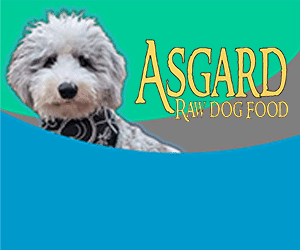Why use a clicker to train a dog? The most important reason is communication. How does one communicate with a nonverbal mammal, not to mention a totally different species than oneself? Sometimes it seems as if our dogs understand what we are saying to them. Some dogs do understand their humans, but that is because the dog has been trained to associate cues with the body movement. Behavior is body movement. Here is where the clicker comes into the picture. Using a clicker enables the animal to understand exactly what body move has earned the reinforcement value. Any organism that can eat can learn body movement using a clicker and a value, provided they hear sound. A bonus of using clicker is that the learner learns the behavior 45% faster using a signal.
The most important part about clicker training is to have fun and be creative! If something is not working for you or the dog, try something new. Take a break, its ok, sessions need to be short and sweet anyway. Over training can cause confusion, which may result in anxiety. The most important aspect of positive reinforcement training is dogs should be having fun and engaged with their handlers while they are learning. If you are just getting started with clicker training, or if you are not getting the results, you hoped for from clicker training, the following tips can help:
1) Click Equals a Treat
When you click your clicker to mark a behavior, you must give your dog a treat. You need to teach your dog that the sound of the click is an extremely reliable predictor that he is about to get a treat. If you don’t always give a treat after you click, the clicker begins to lose some of its effectiveness. You don’t always have to use a clicker when you train your dog, but if you click, you must give a treat.
2) Give the Treat as Quickly as Possible After You Click
If you click your clicker and then take more than a second or two to give your dog a treat, your dog may not understand that there is any connection between the sound of the click and getting a treat. When this happens, the click loses its meaning, and your dog can become confused about what you are asking him to do.3.
3) Timing is everything.
It’s important that you click the clicker at the exact moment your dog performs a behavior. If you aren’t precise with your clicker, you might end up reinforcing the wrong behavior. For instance, if you ask your dog to sit, and he does it, you should click the minute his rear end hits the floor. If you wait even a few seconds too long, your dog might start getting up, and the behavior you mark is him raising his bottom a few inches from the floor. You are not reinforcing the behavior you want. Be sure that you are clicking to mark the exact behavior you want.
4) Keep Your Clicker Handy to Capture Behaviors
Capturing behaviors is a great way to teach your dog new behaviors with very little effort on your part. Keep your clicker and a handful of treats handy, and whenever you catch your dog doing something you like, simply click, and treat. You will be amazed at how quickly your dog can learn new behaviors this way.
5) Take a step back.
It can be frustrating when your dog seems to know a command, and then begins to make repeated mistakes. Your dog is not misbehaving. You probably moved ahead a little too quickly, and now your dog is confused about what you want him to do. Instead of scolding him, go back a step or two in the training process, and then begin to move ahead more slowly. For example, if you are teaching your dog to stay, he may do fine when you have him hold the stay for 5 seconds, but when you try to get him to stay for 20 seconds, he just can’t do it. Try going back to having him hold the stay for 5 seconds, and then click and treat. Practice a few times, and then add a few more seconds to the stay. If your dog is making mistakes, chances are you moved ahead too quickly for him.
6) Keep Clicker Training Positive
Remember that clicker training is supposed to be fun for you and your dog. If you find yourself getting frustrated, end the training sessions. You can go back later and start fresh. Keep training sessions short (no more than 10 minutes) and try to end each one on a positive note!
For videos on how to clicker train behaviors, you can these on my YouTube channel Paulas Dog Services
Paula Shimko KPACTP
paulasdogservices@hotmail.



